Pompeii exhibition highlights value of understanding the achievements of ancient civilizations, Wang Kaihao reports.
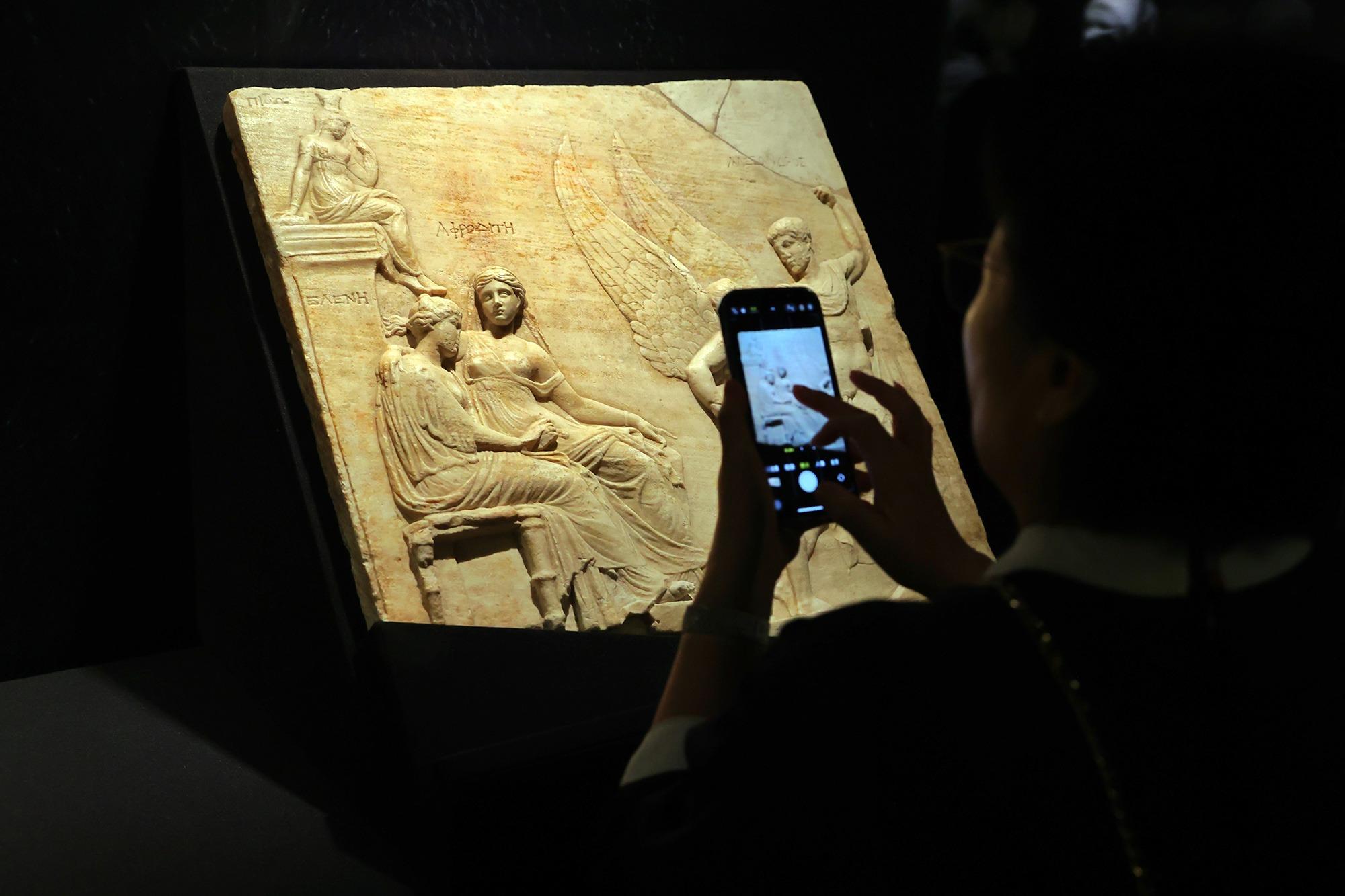 A visitor zooms in on a relief with Trojan prince Paris, his lover Helen and Aphrodite, from the first century AD, at the Love, Luxury, and Beauty in Classical Antiquity exhibition at the National Museum of Classic Books last month. It runs until mid-December. (JIANG DONG / CHINA DAILY)
A visitor zooms in on a relief with Trojan prince Paris, his lover Helen and Aphrodite, from the first century AD, at the Love, Luxury, and Beauty in Classical Antiquity exhibition at the National Museum of Classic Books last month. It runs until mid-December. (JIANG DONG / CHINA DAILY)
With its booming economy, plentiful resources, and astonishing urban and intellectual civilization, the city of Pompeii, which lies close to the Bay of Naples, was an ancient Roman provincial center with a population of between 10,000 and 20,000. Well, it was until one seemingly ordinary autumn day.
On Oct 24 in 79 AD, the violent eruption of nearby Mount Vesuvius killed thousands in this southern Italian city. Its era of prosperity ended in a matter of hours beneath a sulfurous sky. Other towns nearby, like Herculaneum and Oplontis, were also buried in an instant.
From tycoons with refined artistic taste to vulgar tavern goers, the merits and sins, happiness and sorrows of Pompeii's inhabitants were sealed for centuries, until a farmer accidentally stumbled across ancient Roman objects in the area in 1748.
What was later unearthed was more than just another tragic day in history, it was also a stunning trove of beauty.
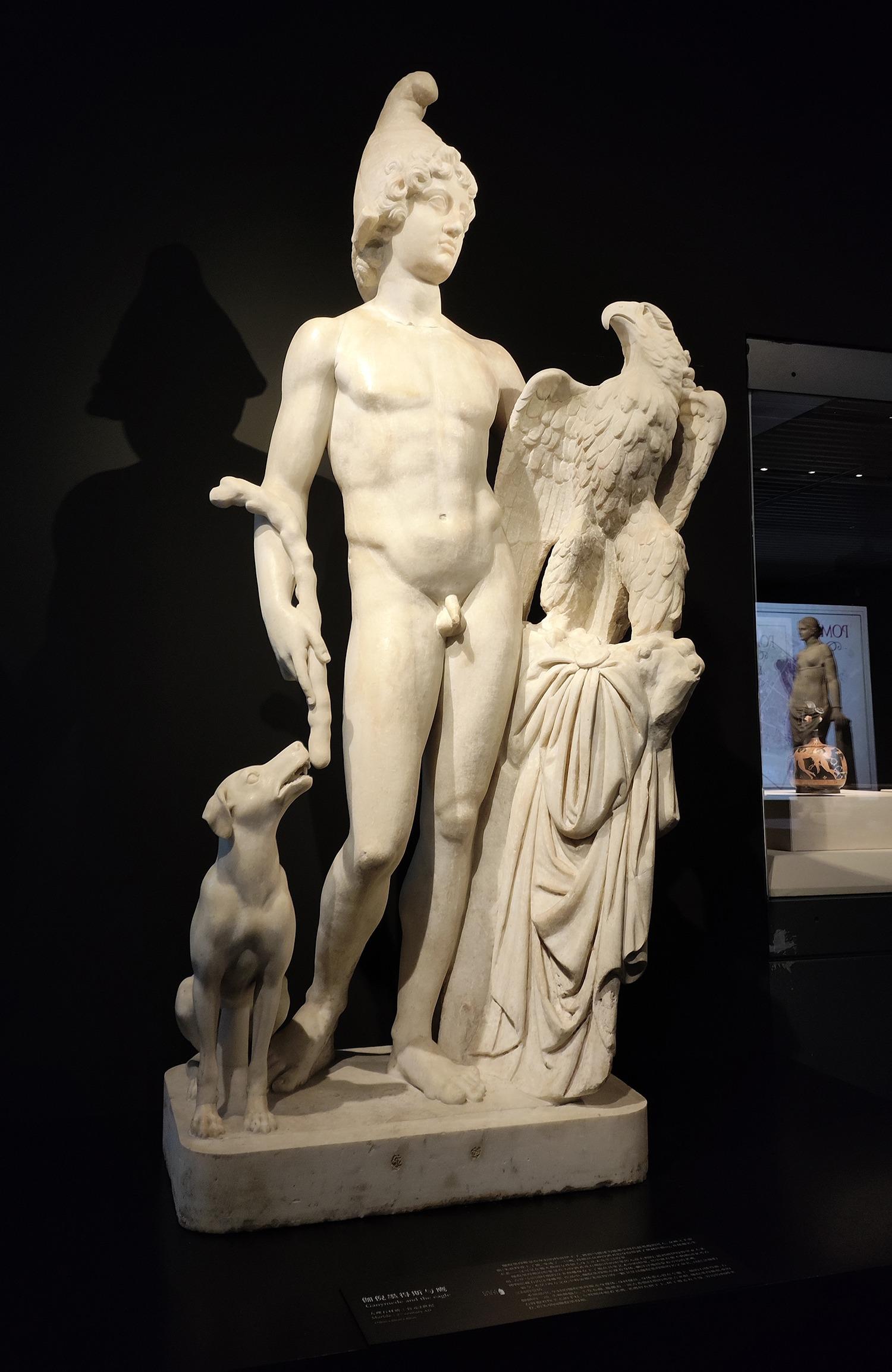 Highlighted marble statues on show, Ganymede and the Eagle, second century AD, and Aphrodite Marina, first century AD. (PHOTO PROVIDED TO CHINA DAILY)
Highlighted marble statues on show, Ganymede and the Eagle, second century AD, and Aphrodite Marina, first century AD. (PHOTO PROVIDED TO CHINA DAILY)
The German poet Goethe toured Pompeii about 40 years after its ruins were rediscovered.
"Many disasters have befallen the world, but few have brought posterity so much joy."
That joy, despite its ambivalent nature, is now available to history lovers in Beijing. The exhibition Love, Luxury, and Beauty in Classical Antiquity opened at the National Museum of Classic Books in late September, and will run through to mid-December.
Including many relics recovered from volcanic ash, the 127 exhibits — statues, frescoes, painted pottery, bronze ware and glass — are on loan from the National Archaeological Museum of Naples, and will usher people back to an age that helped lay the foundations of Western civilization.
"Before being buried by the volcano, Pompeii was nurtured by Greek and Roman civilization," says Qian Qian, executive curator of the exhibition. "The city thus becomes an excellent means for us to understand them."
She says that Greek and Roman culture lives on today thanks to the passion and interest in Western classical civilization sparked by the rediscovery of Pompeii, which was also a unique event in the history of archaeology.
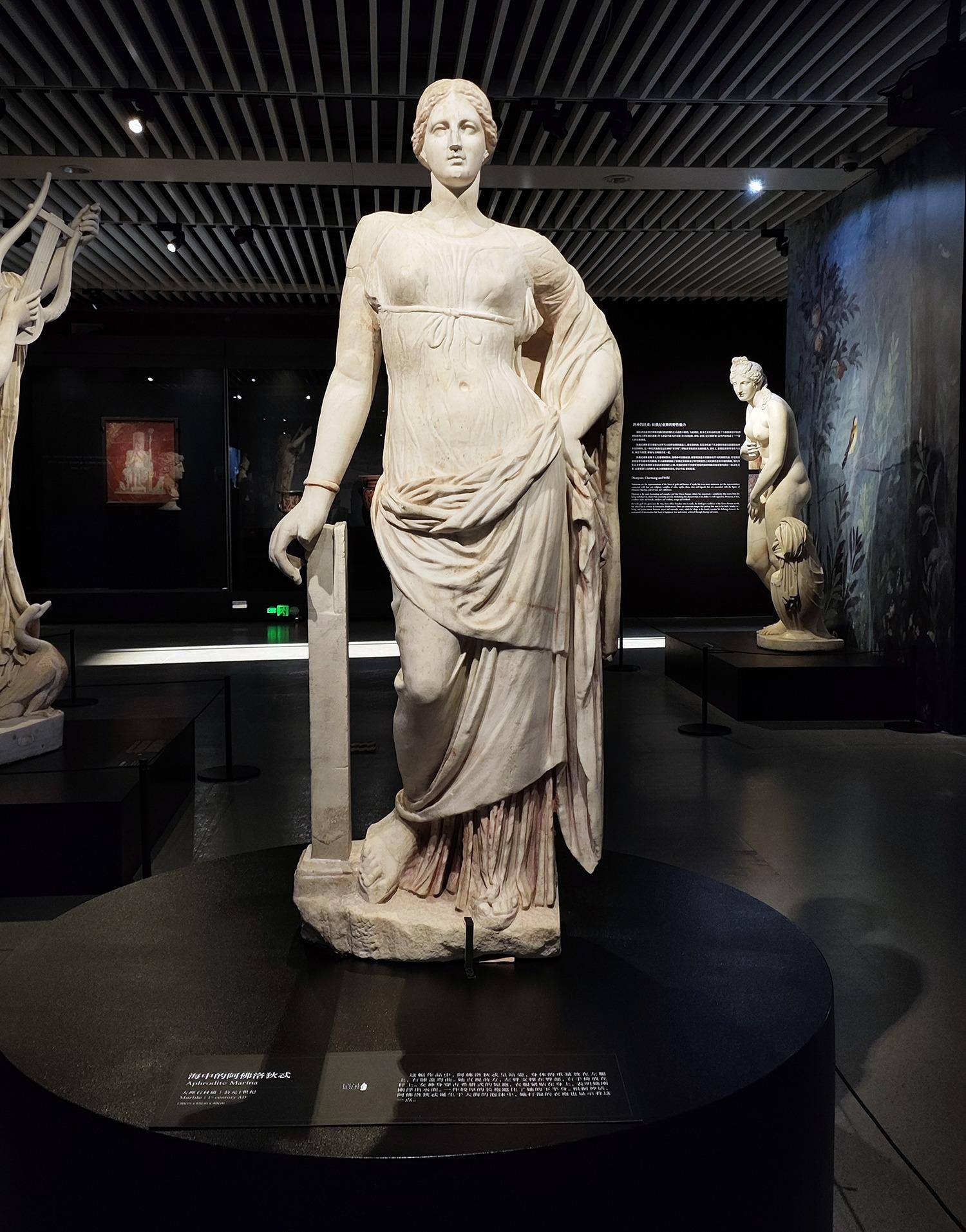 Highlighted marble statues on show, Ganymede and the Eagle, second century AD, and Aphrodite Marina, first century AD. (PHOTO PROVIDED TO CHINA DAILY)
Highlighted marble statues on show, Ganymede and the Eagle, second century AD, and Aphrodite Marina, first century AD. (PHOTO PROVIDED TO CHINA DAILY)
Portrayal of myths
Time has erased the names of the artists that made them, but the anonymity of these pieces does not diminish the immortality of their beauty.
Greek and Roman mythology is a key theme of the exhibition. The goddess of love and beauty is one of the highlights. Aphrodite Marina, a marble statue from the first century AD, vividly portrays the moment of the goddess' birth, as she steps elegantly out of the sea. That image had a lasting influence on Western art over the course of the following centuries, Qian says.
Another marble statue, Ganymede and the Eagle, may inspire people to remember Homer's description of the divine hero as "the loveliest born of the race of mortals", while the exquisitely carved relief, featuring Trojan prince Paris, his lover Helen, and Aphrodite, seems to keenly capture the moment that sparked the Trojan War, the classical inspiration for many other artistic masterpieces throughout European history.
"The flesh and blood of each mythical figure reveals the deep layers and profound connotations of the grand theme of love," Qian explains. "Thus love, in its many different representations, occupies a central place in the ancient Greek and Roman systems of culture and thought."
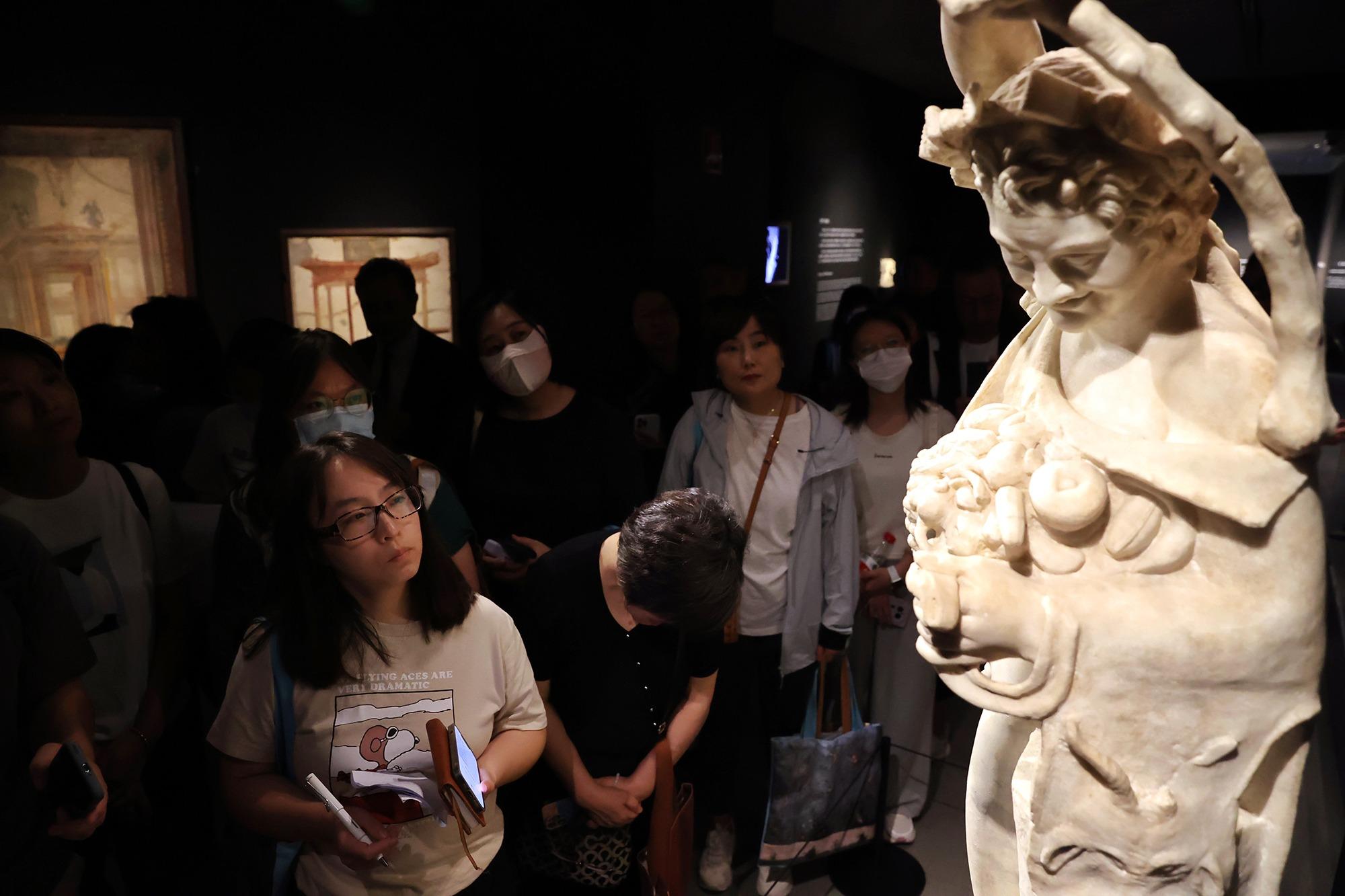 Visitors appreciate a statue of a satyr, a Greek deity, at the exhibition. (JIANG DONG / CHINA DAILY)
Visitors appreciate a statue of a satyr, a Greek deity, at the exhibition. (JIANG DONG / CHINA DAILY)
Other than the worship of mighty deities, the exhibition also aims to present the Romans' love of the good life. Dionysus, the Greek god of wine and good times, who was known to the Romans as Bacchus, is probably the perfect reflection of earthly pleasures. His image is frequently found on painted pottery from Pompeii.
The god was also considered the inventor of theater. As a sign of representation of humanity, theatrical performances in ancient Greece were an integral part of the festivals held in his honor, Qian adds.
The dinnerware, oil lamps, and garden decorations on display reflect a wider perspective of Roman life, but the most touching exhibit may be the reconstruction of a courtyard. Multimedia installations take visitors back to the time of the eruption, while the broken 2,000-year-old frescoes and marble components around the courtyard create an immersive experience, blurring the sense of time and space.
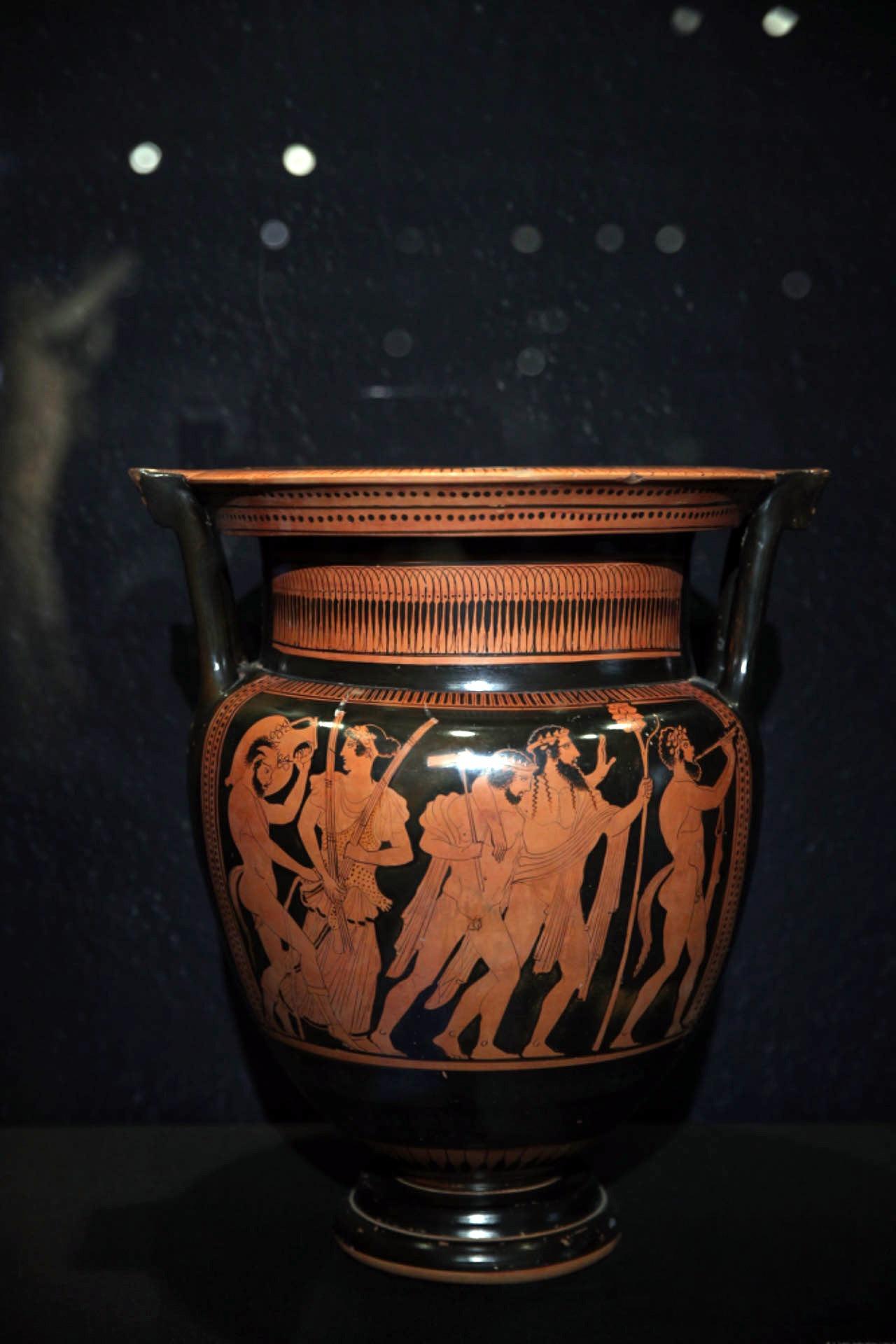 A Dionysus-themed terracotta vase, from the fifth century BC. (PHOTO PROVIDED TO CHINA DAILY)
A Dionysus-themed terracotta vase, from the fifth century BC. (PHOTO PROVIDED TO CHINA DAILY)
The exhibits in the courtyard are simple, a relief of a blacksmith and ordinary landscape paintings. They are not ostentatious, but their everyday appearances magnify the shock that eruption had upon what started out as an otherwise unremarkable day in Pompeii.
During excavations, different facets of this legendary city were gradually revealed by archaeologists' shovels, from architectural structures to frescoes and jewels, and even "freshly" baked bread.
"Love, luxury, and beauty are all metaphysical themes," says Massimo Ambrosetti, Italian ambassador to China. "But when you have an exhibition with these themes as the main thread, we recognize the importance of culture and arts in our life. … This exhibition also reminds us of the significance of exchange among ancient civilizations, like Italy and China."
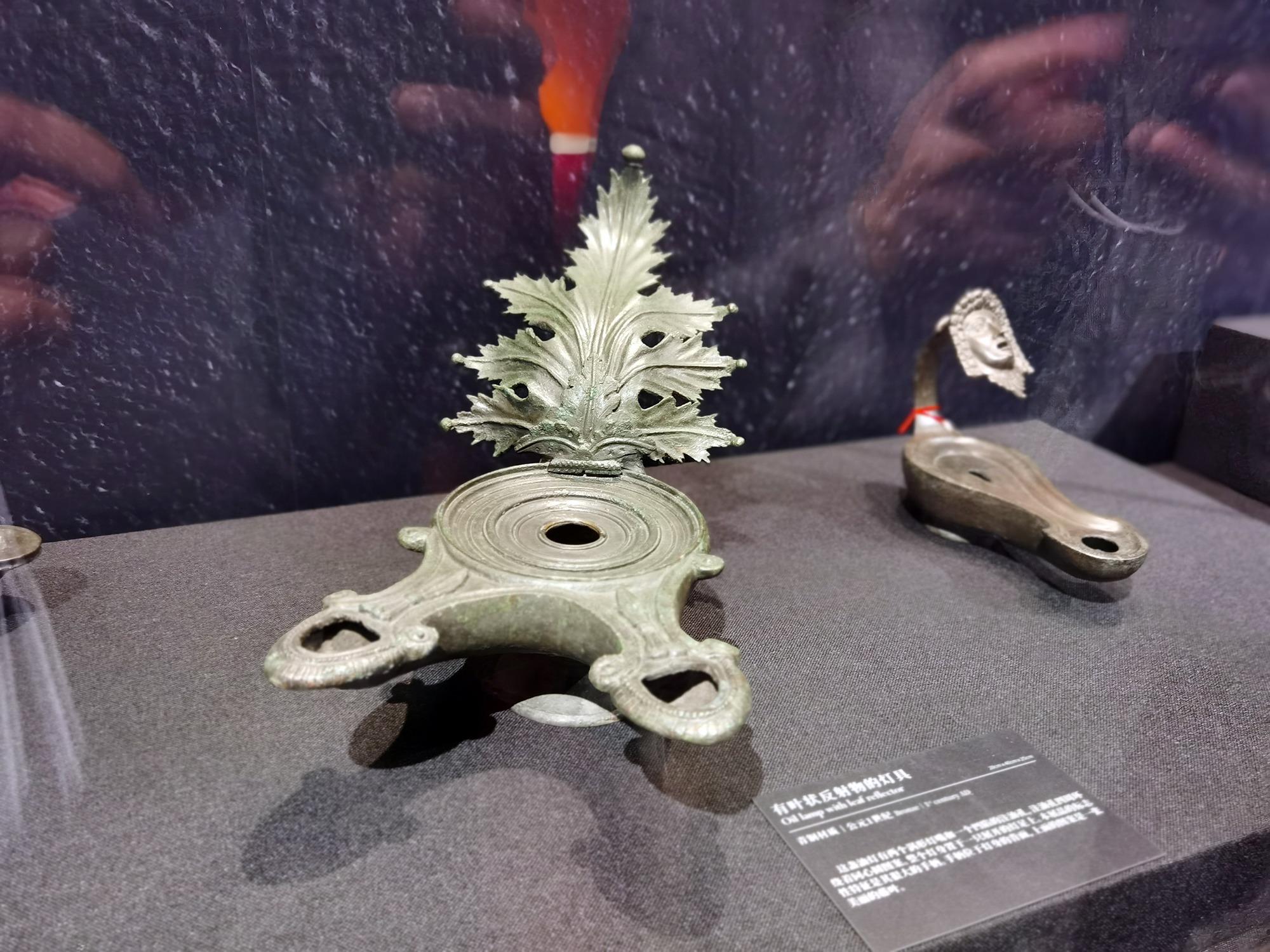 A bronze oil lamp from the first century AD. (WANG KAIHAO / CHINA DAILY)
A bronze oil lamp from the first century AD. (WANG KAIHAO / CHINA DAILY)
A bigger picture
The ongoing exhibition in Beijing is the second leg of its Chinese tour after its debut in Shenzhen, Guangdong province.
In July, a second exhibition, Masterpieces from the National Archaeological Museum of Naples, lifted its curtain at the China World Art Museum in Beijing, with a display of 69 artifacts. As one of the world's first museums to open to the public, it now leads a new wave of exchange between cultural heritage sectors in China and Italy.
"Museums should better benefit the development of local communities," Paolo Giulierini, director of the National Archaeological Museum of Naples, said at the 2023 Beijing Culture Forum last month. "Our museum tries to tell people that Western perspectives cannot be imposed. Instead, it can be a place for different cultures to exchange ideas. Mutual understanding of each other's cultures can build a more inclusive world."
Between 2018 and 2019, Mortals and Immortals: The Treasures of Sichuan in Ancient China toured Italy, highlighting the 3,000-year-old Sanxingdui Culture, known for its exotic-looking bronze ware, and other key ancient sites in the province. The National Archaeological Museum of Naples was its first Italian port of call.
Liu Shuguang, head of the Chinese Museums Association, who once worked on the archaeological site at Pompeii as a visiting scholar, said at the Beijing Culture Forum that the National Archaeological Museum of Naples and other smaller archaeological museums across the city and the Pompeii area can be a source of inspiration for Chinese cities.
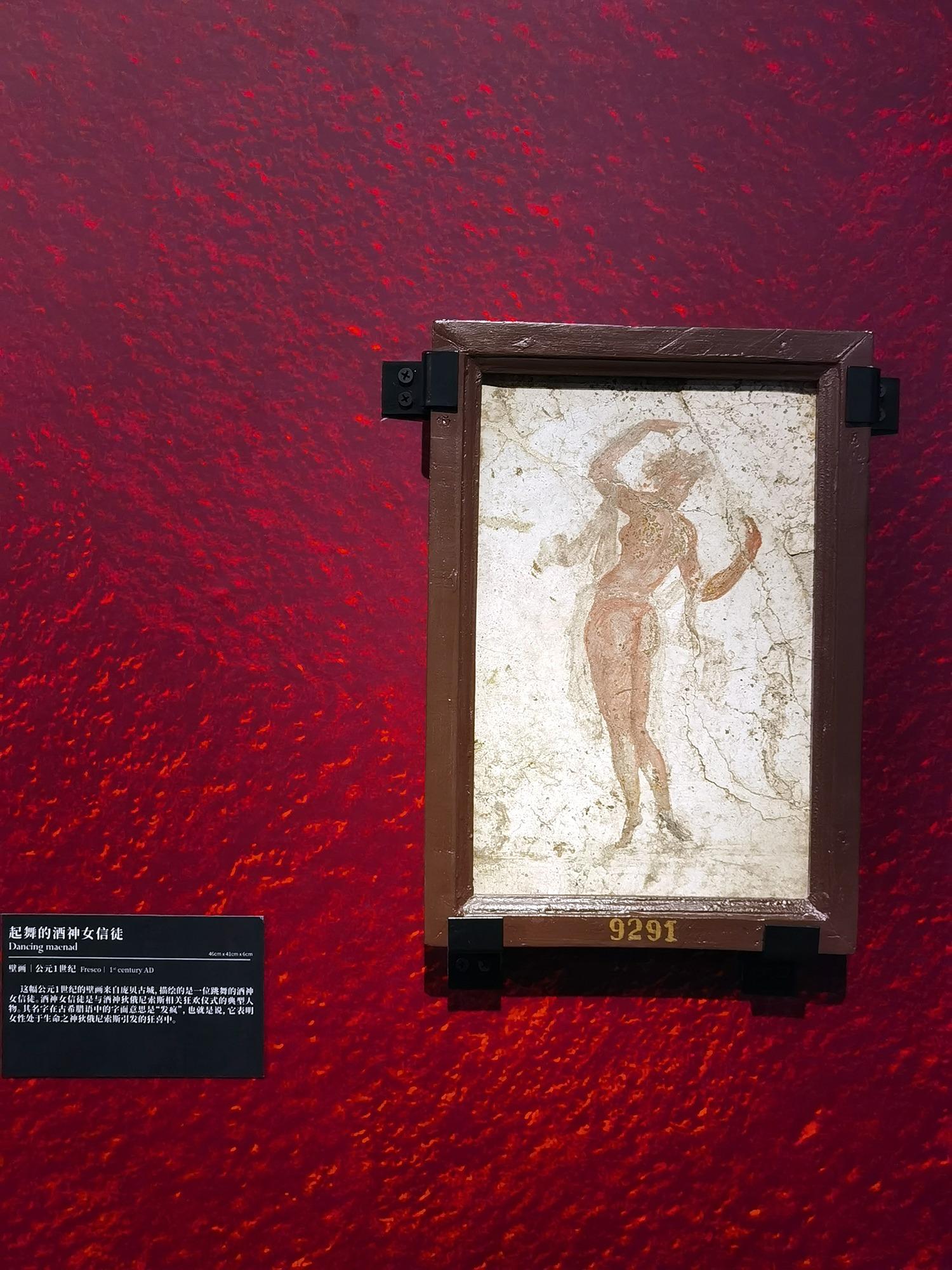 A first century AD fresco of a dancing maenad, or a priestess of the wine god. (WANG KAIHAO / CHINA DAILY)
A first century AD fresco of a dancing maenad, or a priestess of the wine god. (WANG KAIHAO / CHINA DAILY)
He says that better links can be built between a city's overall development and the role of museums in promoting local history and culture.
According to Federico Antonelli, director of the Italian Institute of Culture in Beijing, collaboration between the Chinese and Italian cultural heritage sectors will benefit many fields.
Closer cooperation in cultural heritage conservation, more exchange exhibitions and joint archaeological work in places home to ancient civilizations could also be part of upcoming programs, given Italy's deep experience of international archaeology and China's rapid development in the field.
"We've seen cooperation between the two countries, and not only at the national level," Antonelli says. "It has expanded to many provincial-level institutions, and stone relic restoration in particular interests experts on both sides. The ongoing exhibition also showcases achievements in that area."
Since 2017, a Sino-Italian laboratory has been helping conserve the Dazu Rock Carvings, a UNESCO World Heritage Site in Chongqing. Separately, a bilateral symposium was held in Leshan, Sichuan province, in July on possible cooperation on the Leshan Giant Buddha, another World Heritage Site.
Near the exit of the exhibition at the National Museum of Classic Books, a plaster cast of a young woman is on display. She was discovered in Pompeii, and while her body was incinerated by the blast, its outline was preserved in the hot volcanic ash that covered her. She was found on the ground, quiet but powerful, and her presence touches the heart and moves the imagination.
The individual pieces of projects like this exhibition may also combine to create a grand picture of the historic exchange between China and Italy. Rising from the sands of time, examples of their respective ancient glories and vicissitudes, they point toward a bright horizon ahead.
Contact the writer at wangkaihao@chinadaily.com.cn


